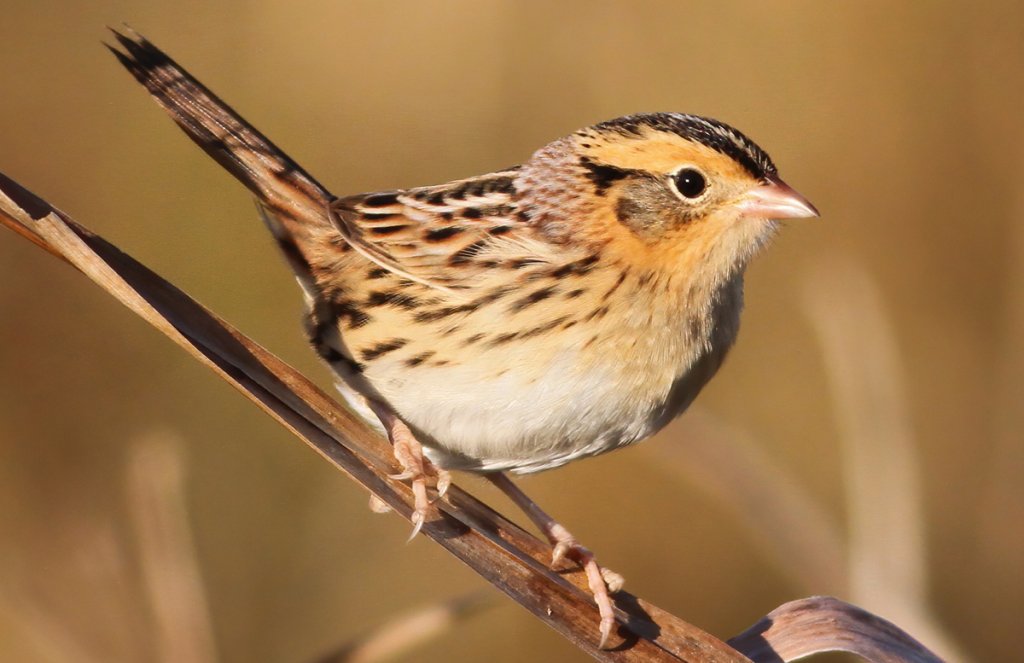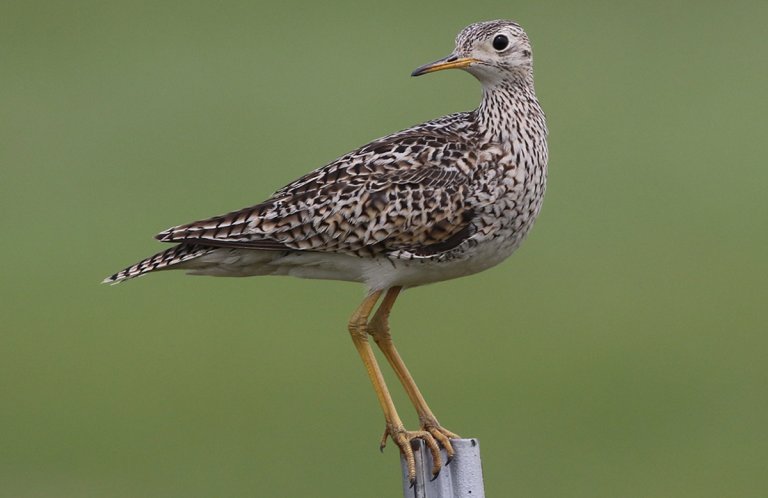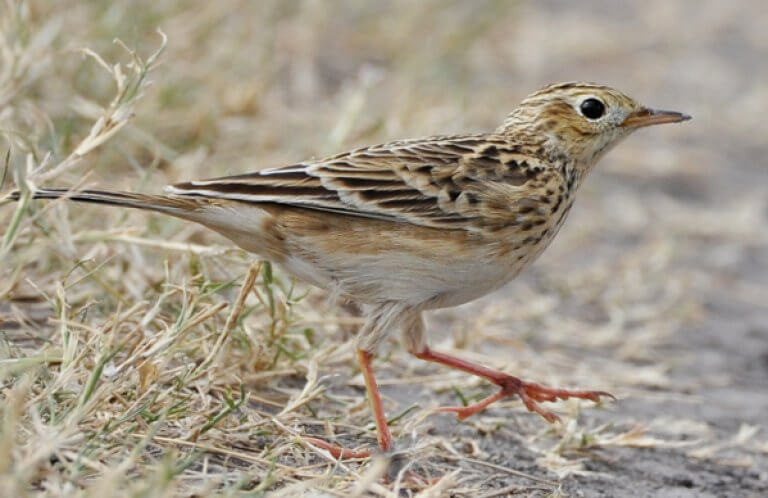About the LeConte's Sparrow
The tiny, elusive LeConte's Sparrow is closely related to other grassland sparrow species, including the Saltmarsh, Baird's, and Henslow's Sparrows. Like these relatives, the LeConte's Sparrow behaves more like a mouse than a bird, foraging on the ground amidst thick vegetation, and scuttling away, rather than flying, when it feels threatened.
For those lucky enough to get a good look at one, the LeConte's Sparrow shows several definitive ID features: a pumpkin-colored face with grey cheeks, a dark brown crown with white central stripe, and, perhaps most notably, a lilac-grey nape streaked in chestnut.
This bird's exceptionally wary ways have made it a difficult study subject.
Life Under Cover
The LeConte's Sparrow is extremely secretive, spending the majority of its time on the ground and only reluctantly taking to the air. If startled into flight, it flits above its grassy habitat for a few feet, then drops back into cover. This sparrow is so elusive that, although the species was officially described in 1790, it took researchers an additional 100 years to find and describe the first LeConte's Sparrow nest.
Although concerted field study has revealed more about this retiring sparrow's habits, there are still many gaps in knowledge about its basic biology, habitat use, and how habitat management can benefit the species.
Songs and Sounds
Only the male LeConte's Sparrow sings — a quiet, buzzy song that can easily be mistaken for an insect's call.
Listen here:
Breeding and Feeding
The LeConte's Sparrow is thought to be monogamous, although much of its courtship and breeding behavior still remains to be described.
Like many grassland birds ranging from the Upland Sandpiper to the Sprague's Pipit, the female LeConte's Sparrow nests on or near the ground, concealing her cup-shaped nest in a clump of thick grasses. She builds her nest from fine grasses and lines it with softer vegetation and hair, then lays a clutch of 3-5 eggs, which she incubates herself. Her eggs hatch after approximately two weeks.

During the summer, the LeConte's Sparrow feeds heavily on insects; during the winter, it switches its diet to grass and weed seeds. It forages on the ground, usually under the cover of thick vegetation.
Region and Range
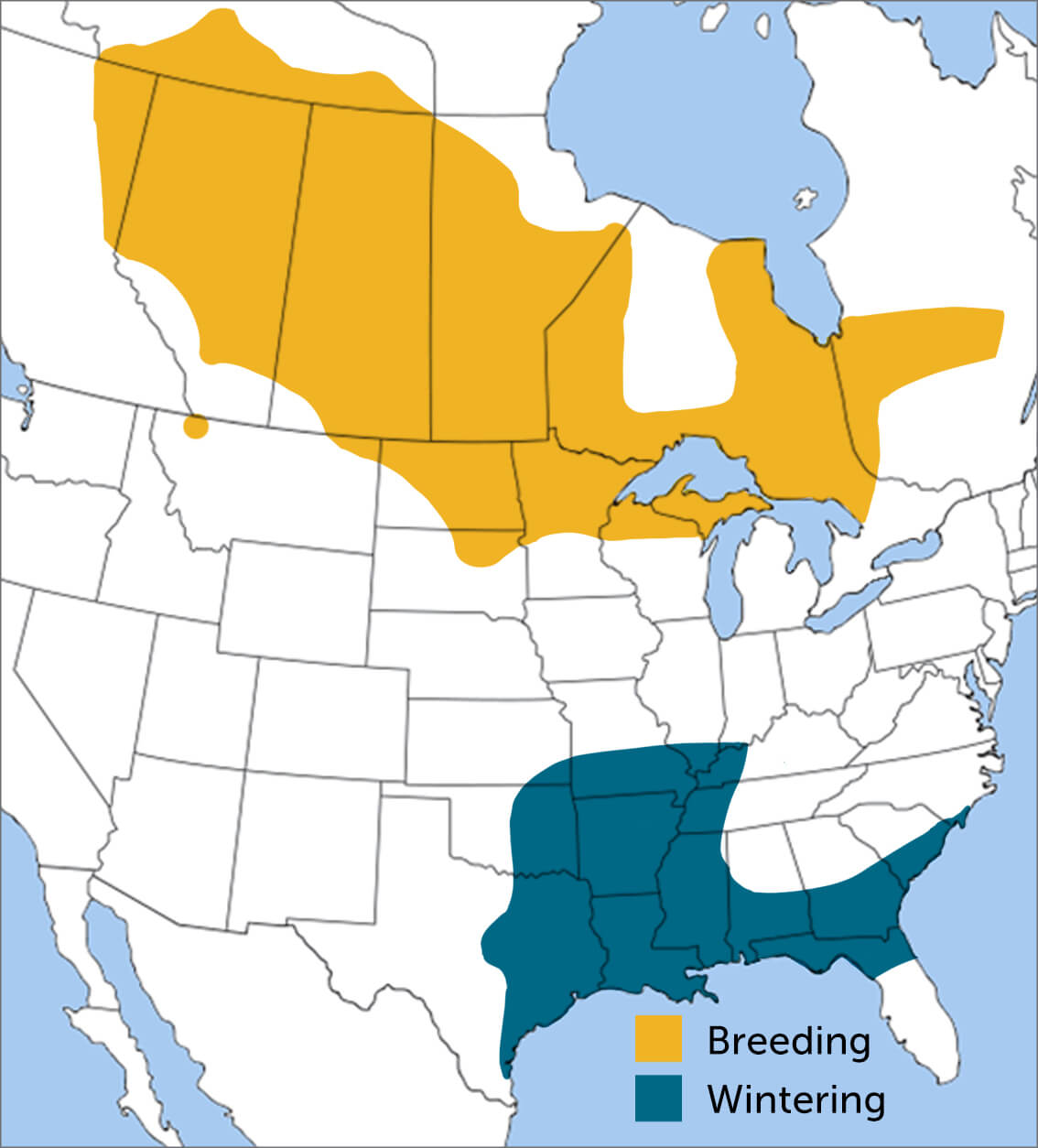
The LeConte's Sparrow breeds in wet prairie and grassland habitats of Canada, and in the U.S. states of Michigan, Montana and Minnesota. It is a short-distance migrant, travelling south by night to spend the winter in similar habitats in the south-central and (more rarely) the southeastern United States.
Conservation
Populations of LeConte's Sparrow have declined by 61 percent from 1970–2014, and the species is included on the Yellow (Declining) Watch List by Partners in Flight. Its decline is due to habitat loss from drainage, fire suppression, exotic and invasive grasses, and herbicide spraying. The LeConte's Sparrow is sometimes parasitized by the Brown-headed Cowbird.
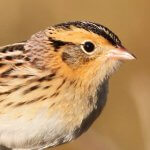
Help support ABC's conservation mission!
Since this species will not nest in areas with woody vegetation, it depends upon periodic disturbances such fire to maintain optimal open habitat. ABC is working with regional Joint Venture (JV) partners in the Oaks and Prairies and Central Hardwoods JVs and with private landowners to use prescribed fire to mimic natural ecosystem processes, improving the prospects for declining birds like the LeConte's Sparrow.
The LeConte's Sparrow is also a priority wintering bird species of open pine habitats in the West Gulf Coastal Plain/Ouachitas Bird Conservation Region, part of the Lower Mississippi Valley Joint Venture.
Get Involved
Policies enacted by the U.S. Congress and federal agencies, such as the U.S. Fish and Wildlife Service, have a huge impact on migratory birds. You can help shape these rules for the better by telling lawmakers to prioritize birds, bird habitat, and bird-friendly measures. To get started, visit ABC's Action Center.
Living a bird-friendly life can have an immediate impact on migratory birds in the United States. Doing so can be as easy as adding native plants to your garden, avoiding pesticides, and keeping cats indoors. To learn more, visit our Bird-Friendly Life page.
American Bird Conservancy and our Migratory Bird Joint Venture partners have improved conservation management on more than 8.5 million acres of U.S. bird habitat — an area larger than the state of Maryland — over the last ten years. That's not all: With the help of international partners, we've established a network of more than 100 areas of priority bird habitat across the Americas, helping to ensure that birds' needs are met during all stages of their lifecycles. These are monumental undertakings, requiring the support of many, and you can help by making a gift today.





































